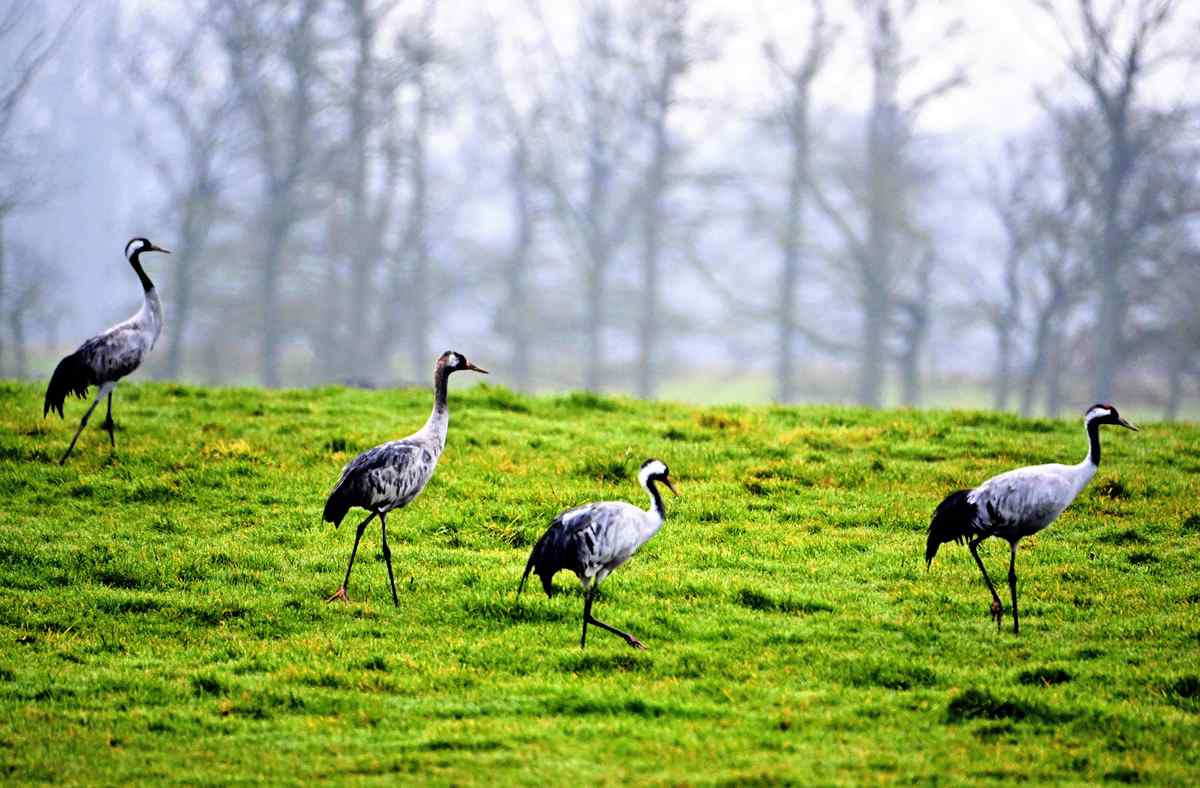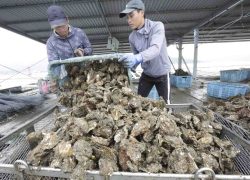
Common cranes gather at Lac du Der near Giffaumont-Champaubert, France, on Jan. 31.
12:31 JST, February 27, 2025
GIFFAUMONT-CHAMPAUBERT, France (AFP-Jiji) — The Lac du Der was once just a passing glimpse for hundreds of thousands of cranes flying from Scandinavia in search of sunshine, but with global warming the French reservoir has become an attractive winter retreat.
Tens of thousands of the majestic birds now spend Europe’s coldest months around the 48-square-kilometer expanse of water south of France’s champagne capital of Reims.
Each year, the number increases and, every dawn, clouds of thousands of birds rise up to fly off in search of food in nearby fields.
Lac du Der was created in the 1970s to stop flood waters heading down the Seine River toward the Paris region.
For much of the time since, small islands in the lake were frozen over in the winter and so of no interest to the common cranes and sandhill cranes that passed over each year heading from Scandinavian countries to Spain and North Africa.
But the rising temperatures of recent decades, much of it blamed on human activity, mean the islets have become a haven for the birds. Nearby fields are also soft enough to find food.
The reservoir unwittingly established a “humid zone” for the cranes on their migration route, according to Benoit Fontaine, an ecologist for the French biodiversity office and the natural history museum.
“Now the birds do not have to go so far,” he added.
Most cranes still head for the Mediterranean sunshine, but the League for the Protection of Birds estimates that up to 30,000 now spend winter around Lac du Der. It says the number has increased tenfold in the past decade.

Common cranes walk in a field at Lac du Der near Giffaumont-Champaubert, France, on Jan. 31.
The cranes have become an attraction for tourists armed with cameras. But local farmers complain of the damage to their land.
“They eat the seed or they tear up the wheat with their feet,” complained Jean-Claude Laffrique, whose farm in the village of Scrupt is 20 kilometers from the lake.
Local residents are also woken up when the squadrons of cranes land nearby. Some experts say migrating birds play a key role in the spread of bird flu.
Laffrique has tried to scare off the cranes by putting old cars in his fields or using a scare cannon — a tube connected to a gas bottle which makes noises. This year he has put up three windsurf boards with their sails.
“After a while, they get used to it,” said the exasperated farmer, who like other landowners gets compensation from the regional government.
"Science & Nature" POPULAR ARTICLE
-

Mass Oyster Die-Offs Confirmed in Japan’s Seto Inland Sea; High Water Temperature Cited as Primary Cause
-

Genome Study Reveals Milestone in History of Cat Domestication
-

Big Leap in Quest to Get to Bottom of Climate Ice Mystery
-

Security Camera Footage Vulnerable to Outside Access; Investigation Finds 3,000 Pieces Exposed Online
-

Paws on Parade: Nairobi’s Dogs Dazzle at ‘Pawchella’
JN ACCESS RANKING
-

Keidanren Chairman Yoshinobu Tsutsui Visits Kashiwazaki-Kariwa Nuclear Power Plant; Inspects New Emergency Safety System
-

Imports of Rare Earths from China Facing Delays, May Be Caused by Deterioration of Japan-China Relations
-

Japan Exports Rise in October as Slump in U.S. Sales Eases
-

Japan Pulls out of Vietnam Nuclear Project, Complicating Hanoi’s Power Plans
-

Govt Aims to Expand NISA Program Lineup, Abolish Age Restriction






















